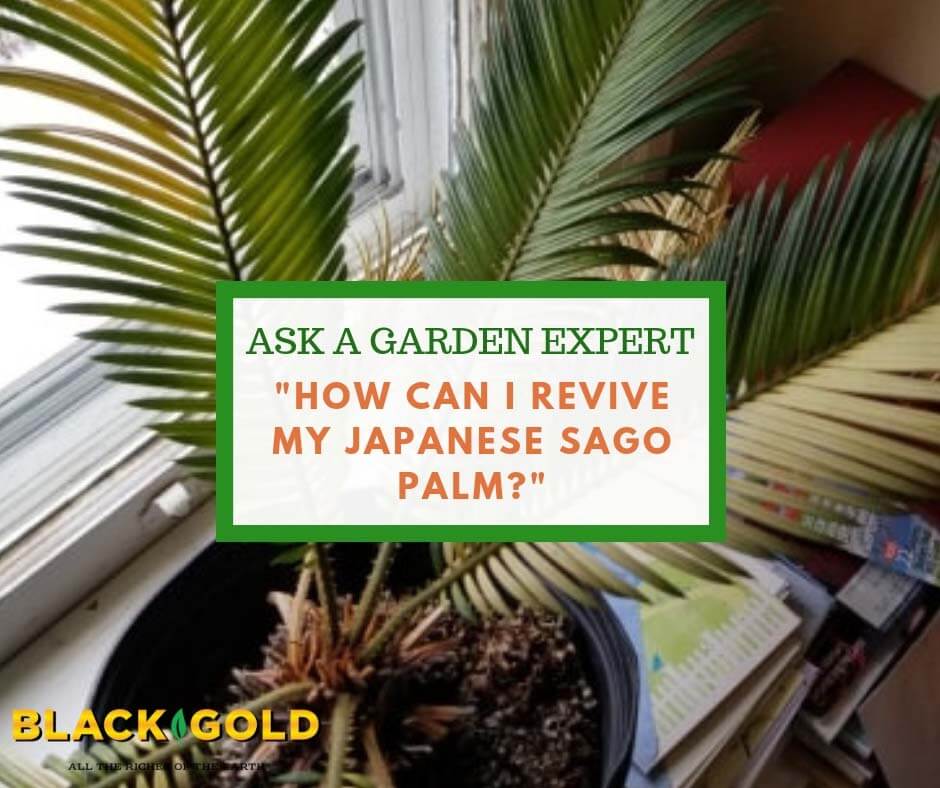
“Any idea what kind of plant this is? It was given to my mom and looks pretty bad. We were also wondering if it’s ok to cut all of the brownish leaves off. Will It come back with new regrowth?” Question from Donna of West Chester, Pennsylvania
Answer: You have a Japanese Sago Palm (Cycas revoluta). It looks like it is struggling. Definitely remove the brown or dying leaves.
It will regrow with good care! These prickly cycads require lots of sunlight and very well-drained soil. During the winter months, they should be watered very little. Leaf browning can be caused by underwatering or overwatering–most often overwatering. If you are watering it a lot, give it a rest for at least three weeks. It should also be in a pot with drainage holes and a bottom saucer to catch water. Good potting mix will also help keep it happy. I recommend repotting it in Black Gold All Purpose Potting Mix amended with added Perlite for drainage, if your mix looks old and depleted.
The drying leaves may also be caused by spider mites, a common pest of these cycads. Spider mites are tiny plant pests, and once you notice their damage, they are already numerous and a problem. The tops of leaves will look like they have little white spots across them. These are dead leaf cells that the mites have sucked dry. You might also see little webs on the leaves and stems of infected plants. To make sure you have mites, and to get an idea of population levels, take a clean piece of white paper, hold it beneath the leaves, then tap the leaves onto the paper. If you have mites, lots of tiny specs will fall. Eventually, they will start crawling around. These are spider mites!
If you think you have mites, remove the worst of the damaged leaves. Then spray, wash, and wipe the remaining stems and leaves thoroughly. Remove the top inch of potting soil and replace it with fresh. It also helps to wipe the container down, in case any mites have strayed. Finally, spray the plants with insecticidal soap or Neem oil. Continue to do the tap test and wipe and spray leaves as needed. In time you will overcome your mite problem.
Happy gardening!
Jessie Keith
Black Gold Horticulturist
